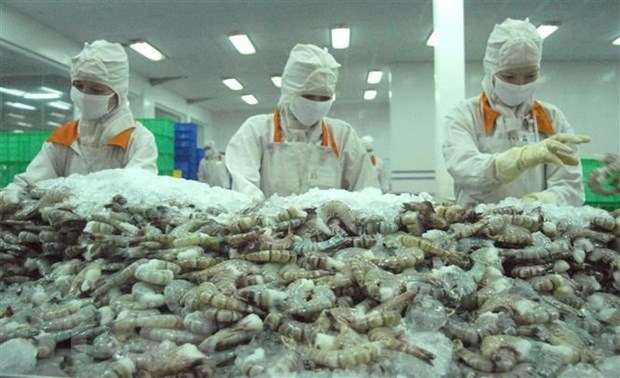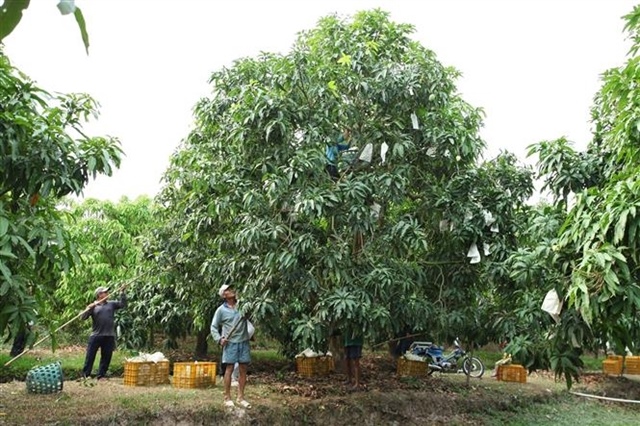Vietnamese shrimp exporters earn $767 million from China
Vietnamese shrimp exporters earn $767 million from China
According to preliminary statistics from Việt Nam's Customs Department, as of August 15 this year the country's shrimp exports to China (including Hong Kong) surged by up to 76 per cent over the same period last year, reaching nearly $767 million and accounting for nearly 29 per cent of the country's total shrimp export turnover.

Fresh and frozen lobsters recorded triple-digit growth, reflecting strong consumer demand for premium products. Photo cafef.vn |
Việt Nam’s lobster and large tiger prawn products are popular with Chinese consumers, helping Vietnamese exporters earn US$767 million from shipments to the country, which has a massive population of more than 1.4 billion.
According to preliminary statistics from Việt Nam's Customs Department, as of August 15 this year the country's shrimp exports to China (including Hong Kong) surged by up to 76 per cent over the same period last year, reaching nearly $767 million and accounting for nearly 29 per cent of the country's total shrimp export turnover.
With its large consumer market, China has seen the best growth rate for Vietnamese shrimp exports this year. In the first half of August 2025 alone, export value to the northern neighbour reached nearly $57 million.
The Vietnam Association of Seafood Exporters and Producers (VASEP) has reported triple-digit growth for fresh and frozen lobsters, reflecting strong consumer demand for premium products.
Black tiger shrimp exports to the Chinese market also saw double-digit growth, while whiteleg shrimp recorded a decrease.
Data from Chinese customs shows that in the first seven months of 2025, the country imported 519,000 tonnes of frozen warm water shrimp, down 2 per cent compared to the same period in 2024. However, import value increased by 7 per cent to $2.73 billion due to an average price hike of 9 per cent, to $5.25 per kilogramme.
In July alone, China’s import volume skyrocketed to more than 90,000 tonnes, the highest level since the beginning of 2024, showing that demand has recovered somewhat after a period of stagnation.
Ecuador continued to dominate, supplying up to 75 per cent of China's shrimp imports.
Meanwhile, China reduced shrimp imports from India to 76,000 tonnes.
In contrast, Vietnamese shrimp has emerged as an additional option in the high-end market segment for China, with strong export growth.
VASEP notes that while Ecuador and India have advantages in price and output, high-quality Vietnamese products — including large black tiger shrimp, live lobsters and processed products with high added value — are favoured by Chinese consumers.
“This advantage helps Vietnamese shrimp avoid direct competition with Ecuador in the popular segment, while opening up opportunities to exploit a potential niche market in China, where the demand for premiumisation is increasingly evident,” VASEP said.
The seafood association added that in the short term, Vietnamese shrimp exports to China are expected to continue to grow, especially during major holidays like the Mid-Autumn Festival, New Year and Lunar New Year, due to the strong increase in demand for gifts and seafood consumption. Live lobsters, large black tiger shrimp and processed whiteleg shrimp will likely play a key role.
In the medium term, China’s growing domestic aquaculture output will put pressure on imports, while competition from Ecuador and India remains fierce. Vietnamese shrimp exporters should therefore stick to their strategy of focusing on quality, diversifying products and exploiting high-end market segments, VASEP said.
- 14:34 15/09/2025




























